Home
MINISTRY OF CONSTRUCTION AND URBANISM INITIATES THE TRADITIONAL ARCHITECTURAL HERITAGE PROJECT
Identified with Serbia
For the first time the state shows its serious about such a project. It was supported by UNESCO, Serbian Academy of Science and Arts, several professional associations… It will enable free of charge modern objects plans made in the manner of Serbian traditional architecture, as well as financing social housing programs, along with applying high technological standards and energy efficiency principles. The Serbian traditional house is entering strategic documents, special and urbanism plans, guidelines for designing and construction. Why is it important?
By: Damjana Glušac and NR Press
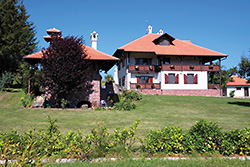 The term Serbian house includes the idea of ambient architecture, with a solid and complementing relationship between man and natural environment. The Serbian people live in a very varied area, from gentle plains in Vojvodina to Šar Planina and the Coast. Naturally, the authentic houses of the Morava area differ from those in Banat or Herzegovina, just like the Zlatibor log cabins and Kosovo single storey houses are not the same. Traditionally, people choose a place for their house with special care. House builders do not build in flooding areas, landslides or mountain heights. According to their long experience, they look for sunny slopes, valleys, places with a favorable microclimate. The term Serbian house includes the idea of ambient architecture, with a solid and complementing relationship between man and natural environment. The Serbian people live in a very varied area, from gentle plains in Vojvodina to Šar Planina and the Coast. Naturally, the authentic houses of the Morava area differ from those in Banat or Herzegovina, just like the Zlatibor log cabins and Kosovo single storey houses are not the same. Traditionally, people choose a place for their house with special care. House builders do not build in flooding areas, landslides or mountain heights. According to their long experience, they look for sunny slopes, valleys, places with a favorable microclimate.
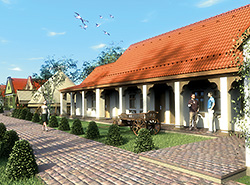 – Many great civilizations were created in the bogs of powerful rivers (Mohenjo-daro in India, the Yellow River in China, the Nile in Egypt, Tigris-Euphrates in Mesopotamia…). People settled in such places due to the abundance of water and fish in the river. They lived in pile dwellings and thus adapted to the natural environment by the types of objects and building material – reminds Branko Bojović, architect, member of the ”Serbian Houses” National Society and Ministry of Construction and Urbanism working group for realizing the ”Serbian Traditional House” project. – Traditional building completely depends on the location. An igloo is made of snow, material from the immediate surrounding. The Mongolian yurta house is built of skin, corresponding to the nomadic way of life of cattlemen. African huts are placed on high sticks, elevated from the hot earth, so the temperature inside is 10 to 15 degrees lower than outside. The houses in the Mediterranean are compact, streets are narrow, with high shadows. Facades are painted in white because this color is solar reflective. Such architectural adjustments also exist in our lands. The long architectural experience of our ancestors is built into the Serbian architectural heritage, into the Serbian houses in our lands. – Many great civilizations were created in the bogs of powerful rivers (Mohenjo-daro in India, the Yellow River in China, the Nile in Egypt, Tigris-Euphrates in Mesopotamia…). People settled in such places due to the abundance of water and fish in the river. They lived in pile dwellings and thus adapted to the natural environment by the types of objects and building material – reminds Branko Bojović, architect, member of the ”Serbian Houses” National Society and Ministry of Construction and Urbanism working group for realizing the ”Serbian Traditional House” project. – Traditional building completely depends on the location. An igloo is made of snow, material from the immediate surrounding. The Mongolian yurta house is built of skin, corresponding to the nomadic way of life of cattlemen. African huts are placed on high sticks, elevated from the hot earth, so the temperature inside is 10 to 15 degrees lower than outside. The houses in the Mediterranean are compact, streets are narrow, with high shadows. Facades are painted in white because this color is solar reflective. Such architectural adjustments also exist in our lands. The long architectural experience of our ancestors is built into the Serbian architectural heritage, into the Serbian houses in our lands.
ACCORDING TO THE NEEDS OF MAN AND NATURE
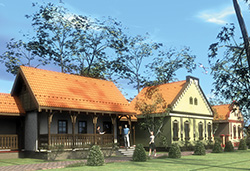 Regardless of the regional type, Serbian houses are made according to the needs of man and simple. Šumadija houses have roofs with four slopes; a square divided in two as a base, a hearth, bedroom, ”slava” room (where the family and social events took place) and a porch where the family spent time when the weather was nice. It is a picture of life in Serbia until the 1920s and represents the Serbian architectural heritage. It was unjustly neglected for decades; students didn’t learn about it in schools, it was underestimated as a ”peasant house”. Regardless of the regional type, Serbian houses are made according to the needs of man and simple. Šumadija houses have roofs with four slopes; a square divided in two as a base, a hearth, bedroom, ”slava” room (where the family and social events took place) and a porch where the family spent time when the weather was nice. It is a picture of life in Serbia until the 1920s and represents the Serbian architectural heritage. It was unjustly neglected for decades; students didn’t learn about it in schools, it was underestimated as a ”peasant house”.
– Only those who cannot see can say that – says Tihomir Obradović, MA, specialist for folk architecture, also member of the ”Serbian House” National Society and Ministry of Construction working group. – Its beauty is in moderation and amazing proportionality, in harmony with nature. It is not flamboyant or prete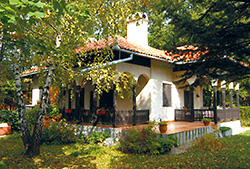 ntious, and it’s artistically upgraded with taste. We respect Japanese architecture, yet we were unable to recognize the lavish asceticism in our houses, where everything was also minimalistic and functional. There is nothing superfluous; the space is clean, because it has multiple purposes during the day. Our great grandmothers had a ”dolap” in their rooms, a space built in the wall for storing clothes and things. Today we call it ”the American closet”!? Our ancestors recognized all the important principles of the culture of living and organization of space, and it’s up to us to apply them in a modern context. That is the essence. When you see a new building today, you most often see imitation and extreme superficiality. You realize that it’s an architecturally ntious, and it’s artistically upgraded with taste. We respect Japanese architecture, yet we were unable to recognize the lavish asceticism in our houses, where everything was also minimalistic and functional. There is nothing superfluous; the space is clean, because it has multiple purposes during the day. Our great grandmothers had a ”dolap” in their rooms, a space built in the wall for storing clothes and things. Today we call it ”the American closet”!? Our ancestors recognized all the important principles of the culture of living and organization of space, and it’s up to us to apply them in a modern context. That is the essence. When you see a new building today, you most often see imitation and extreme superficiality. You realize that it’s an architecturally 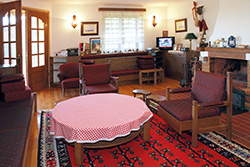 poor object, a mere assemblage of building material. Our modern settlements are, unfortunately, mostly completely idealess depots of architectural shapes, without any elementary design. poor object, a mere assemblage of building material. Our modern settlements are, unfortunately, mostly completely idealess depots of architectural shapes, without any elementary design.
There were no technical conditions or urbanism plans in the past, continues Mr. Obradović, but people always built houses which ”fit into the landscape”. The right to a view was inviolable.
– No one ever thought of erecting a building two meters from your house and blocking your view. It couldn’t happen regardless whether it was a city or village house. People respected the customary law. We have the heritage of Prizren and Peć, pearls of medieval cities, but today we have vulgar non-urbanized settlements sprouting all around us. We are regressing, which is terrifying.
FOLLOWING THE TRACES OF JOVAN CVIJIĆ
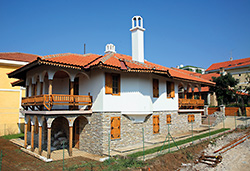 Famous Serbian researchers, such as academicians Aleksandar Deroko and Branislav Kojić, later Zoran Petrović, Brana Milenković, Boža Petrović and others, studied folk architecture and scientifically proved that traditional architectural forms are also legitimate today, even superior. Principles of modular coordination, energy efficiency, harmony between the object and its surrounding… can be seen in that architectural heritage. But alas, this has long been in narrow academic circles, without wider self-consciousness and application. Only in the last twenty-five years, with strange resistance in some circles, the values derived from Serbian folk architecture have been reaffirmed, both theoretically and practically. Late professor Boža Petrović had a great contribution. Famous Serbian researchers, such as academicians Aleksandar Deroko and Branislav Kojić, later Zoran Petrović, Brana Milenković, Boža Petrović and others, studied folk architecture and scientifically proved that traditional architectural forms are also legitimate today, even superior. Principles of modular coordination, energy efficiency, harmony between the object and its surrounding… can be seen in that architectural heritage. But alas, this has long been in narrow academic circles, without wider self-consciousness and application. Only in the last twenty-five years, with strange resistance in some circles, the values derived from Serbian folk architecture have been reaffirmed, both theoretically and practically. Late professor Boža Petrović had a great contribution.
Besides more than 200 projects and many studies and scientific works, professor also left a kind of a 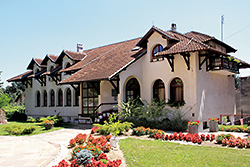 legacy to future Serbian generations. Aware of the needs and standards imposed by the modern age, relying on talent, academic knowledge and experience, he successfully merged the modern house with the ambient architecture of the area, according to the cultural tradition and national identity. The work of professor Petrović is respected by many architects and wider academic community, but now, for the first time, these ideas are seriously supported by the state. legacy to future Serbian generations. Aware of the needs and standards imposed by the modern age, relying on talent, academic knowledge and experience, he successfully merged the modern house with the ambient architecture of the area, according to the cultural tradition and national identity. The work of professor Petrović is respected by many architects and wider academic community, but now, for the first time, these ideas are seriously supported by the state.
– Professor Petrović revived the value system in traditional architecture, nor for patriotic and romantic, but for purely practical reasons – says Branko Bojović. – He opened rich treasuries of knowledge and experience of many previous generations and brought them before us. The forerunner of such a way of thinking in Serbian science was actually Jovan Cvijić, whose anthropogeography, with 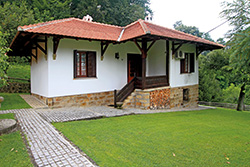 similar depth, determines the relation between the human and the geographic area. That is the basic idea of Boža Petrović. We had other followers of Jovan Cvijić’s tradition, such as Branislav Kojić or professor Simonović, but only Boža Petrović moved further from doctrines and philosophy. As a genetically predetermined architect, he instinctively caught the essence and transferred it into architectural practice. It is a great idea of culture and civilization, which should be completely supported and affirmed in all possible ways. similar depth, determines the relation between the human and the geographic area. That is the basic idea of Boža Petrović. We had other followers of Jovan Cvijić’s tradition, such as Branislav Kojić or professor Simonović, but only Boža Petrović moved further from doctrines and philosophy. As a genetically predetermined architect, he instinctively caught the essence and transferred it into architectural practice. It is a great idea of culture and civilization, which should be completely supported and affirmed in all possible ways.
***
Return to Our Identity
– The state will finance the construction of traditional Serbian houses for social needs, so the local authorities made an open competition. Municipalities will soon be able to get free project documentation for such houses, and so will people who privately want to build authentic Serbian houses. Thanks to the steps we have taken, the construction will cost about 300 Euros per square meter. I expect we will soon have entire streets and settlements looking up to the Serbian architectural heritage, along with applying up-to-date technological standards and energy efficiency principles – says Velimir Ilić, minister of construction, upon whose initiative the entire project was initiated. – We have to return our identity and recognizable architecture. We need to have our Serbian architectural style and preserve the Morava, Vranje, Vojvodina, Kosovo… houses, as well as return the soul to Serbian rural areas. We have beautiful monastery residences, the entire world admires them, so such architecture should be transferred to private objects as well. We also have similar projects for schools, municipalities, kindergartens and other state objects… And only domestic building material will be used for construction.
***
Mass Production, Low Price
– The construction of traditional Serbian houses for about 300 Euros per square meter may easily be realized if standard construction is applied, with mass production of necessary building material, and if local authorities support the project – says Goran Rodić, secretary of the Serbian Chamber of Commerce Construction Board. – We support every initiative which will revive the construction industry and help people obtain a home for an acceptable price.
The Engineering Chamber of Serbia earlier initiated the ”Beautiful Serbia” project, for improving the way of construction of houses built in the old Serbian architectural manner.
***
Pleasant Surprise
– The initiative of the Ministry to construct in the manner of traditional Serbian architecture in the following period is a pleasant surprise and long-term a very wise step – says Slavoljub Zakić, engineer, member of the Ministry of Construction and Urbanism working group for realizing the ”Serbian Traditional House” project. – Any serious state cherishes the values and works of its architectural heritage, because it is a recognizable and best visible part of the national identity and culture. Just by looking at a house, you can easily know whether you’re in England, Japan or Russia. What about Serbia? Wouldn’t it be logical to have objects built in the manner of authentic traditional architecture of our lands already from the border crossings and along highways? Wouldn’t it be normal and nice to have train stations, municipality buildings, schools and other public objects look like Serbia? Wouldn’t it be a role-model that individuals could also look up to? Thanks to this Ministry, this is the first time we not only have someone in the state to speak to, but someone ready to take real steps.
|
